In the mind of many Vietnamese readers, the name of writer Trần Dần has been inextricably linked with artistic experimentation and innovation. His poetic voice feels nothing like those of writers I learnt back in high school: there is something so different, refreshing and oddly contemporary about it. As I consider every page of his bulky posthumously published anthology Thơ (Poetry), I find his legacy remains inspirational even for contemporary readers — especially other young Vietnamese — on what it means to “be an artist.” This does not only entail one’s appreciation and production of Vietnamese art, but also their adoption of an artist’s mindset into daily life.
Good art confronts life in all its complexity and grittiness
Around 1954, Trần Dần joined the guerrilla forces to fight against the French in the Điện Biên Phủ battle, and was actively involved the artistic scene alongside his revolutionary peers. While they all adopted socialist realism as the ideological paradigm for their works, what set a writer like Trần Dần apart was his desire to confront the current affairs in all their complexity and grittiness.
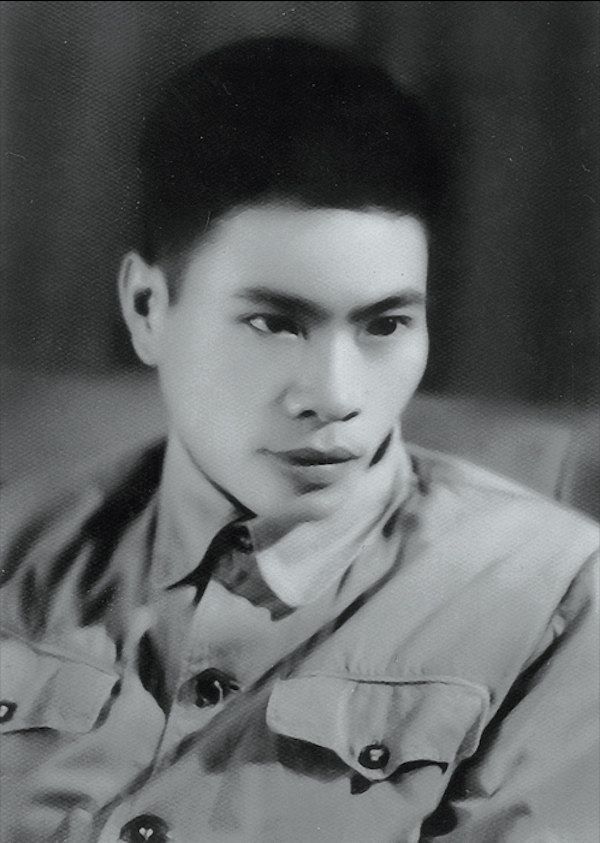
Trần Dần as a young adult.
In comparison, most poets in this period still adhered to the lyricism of the sentimental pre-Điện Biên Phủ Thơ Mới (New Poetry) movement, and classical Vietnamese epics such as Truyện Kiều (The Tale of Kiều). Their depictions of battles were indirect at best, romanticized at worst, and mostly focused on uplifting, hard-working portrayals of a pastoral Vietnam, as opposed to the soldiers’ internal struggles. “Some people want poetry to be clear, enthusiastic, rosy, melodious,” Trần Dần wrote, “that is why, I instead want a kind of poetry where there’s the enthusiasm of teardrops, sweat, and crimson blood; the enthusiasm of dust, dirt sand, gunpowder, corpses, crematorium, [...]; the enthusiasm of disappointments, separations, disintegration, and failure. I want a dose of sweet medicine from earth’s most bitter and spicy tastes.”
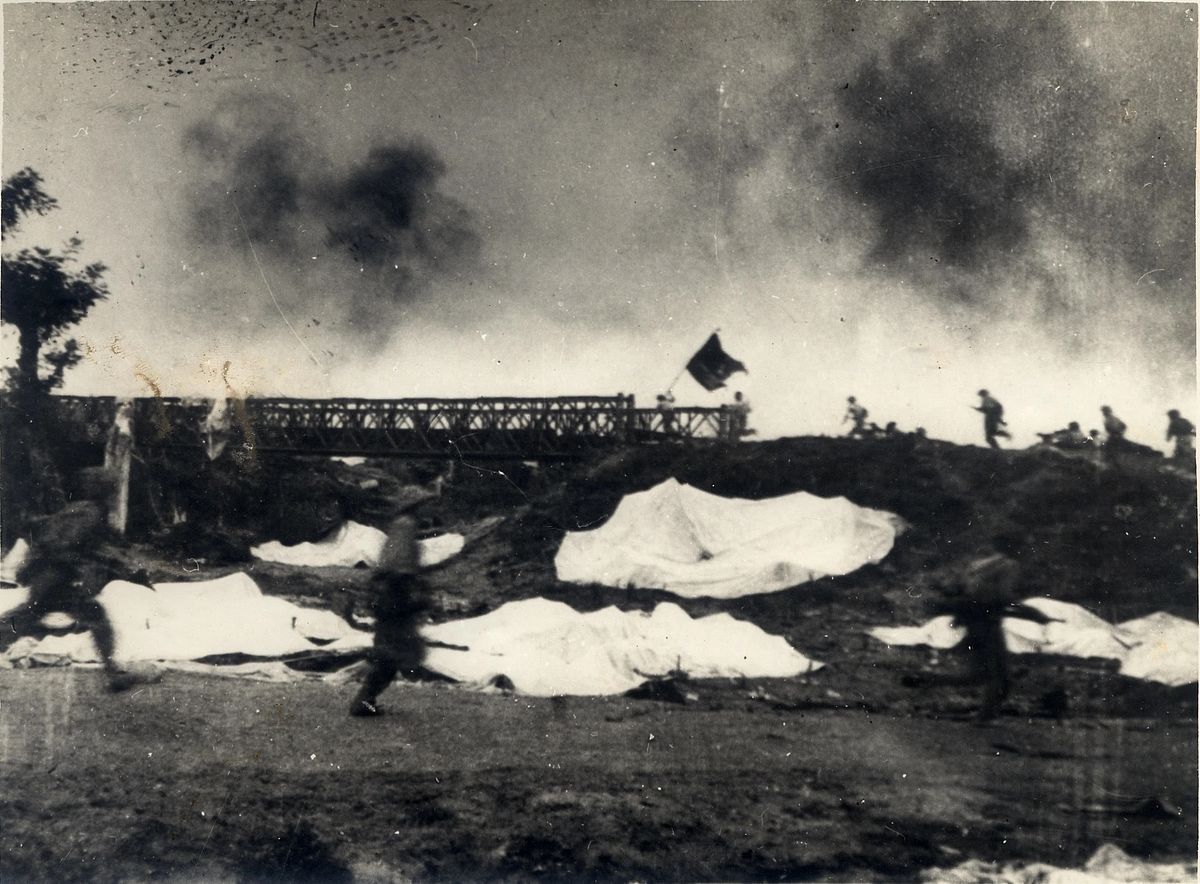
A soldier unit carrying the flag “Quyết chiến, quyết thắng” as they seize Mường Thanh Bridge in 1954.
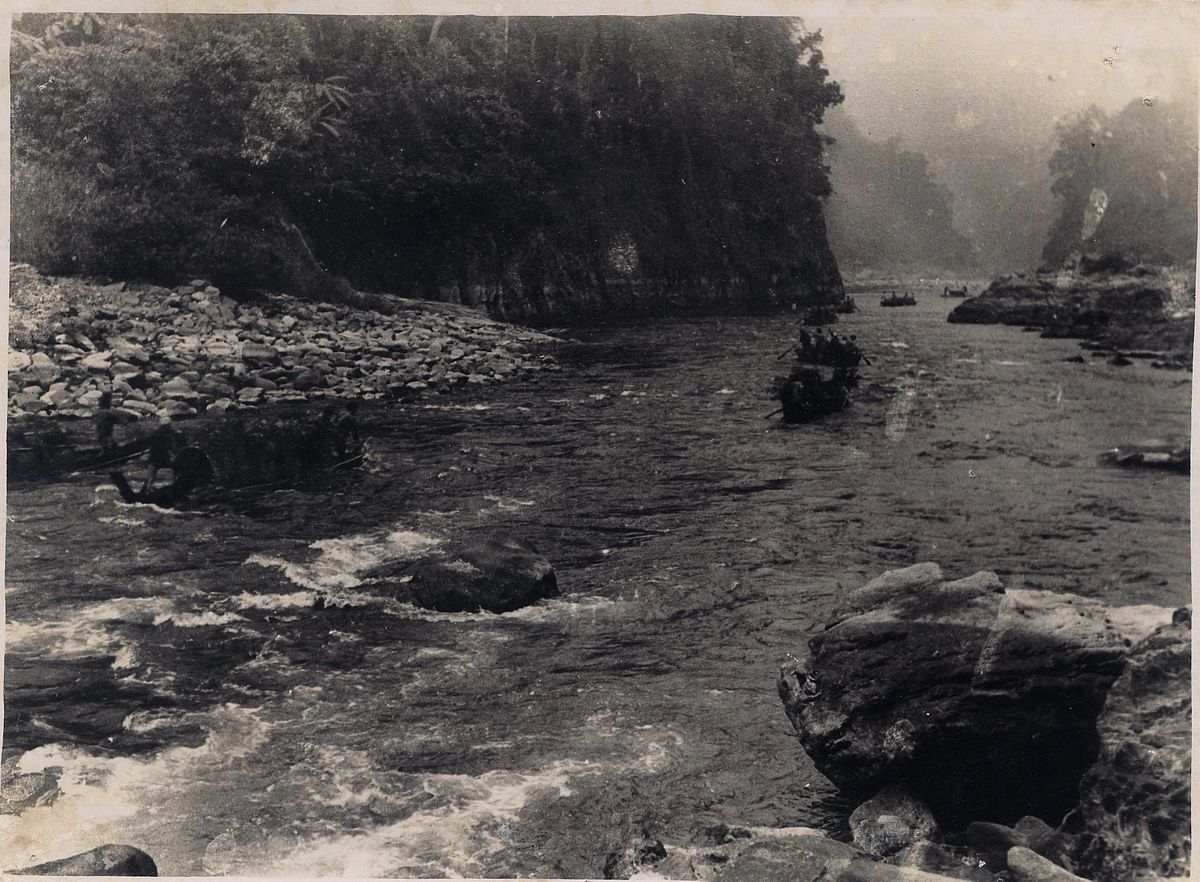
Soldiers rowing against the stream of Mã River in Thanh Hoá to deliver rice as part of their war effort during the Điện Biên Phủ battle.
This was extracted from Trần Dần – Ghi 1954-1960 (Trần Dần – Writes 1954-1960), a published compilation of the writer’s personal notes. He further added: “I love current affairs poetry, following closely the anticipations and worries of my Party, my fellow citizens, millions and millions of hearts of civilians and army, soldiers and cadres, leaders and populus.” As evaluated by critic Đỗ Lai Thuý, Trần Dần was highly against superficial and clichéd tellings of contemporary life. Instead, he championed honest observations that demonstrated deep empathy for flawed, human experiences. As sentimental as this might sound, Trần Dần’s works actually embraced ambivalence with an astute eye, and via a more impactful and innovative poetic voice than his contemporaries': this was what poetry of the new, revolutionary era should be — as envisioned by Trần Dần and many writers supporting Nhân Văn–Giai Phẩm.
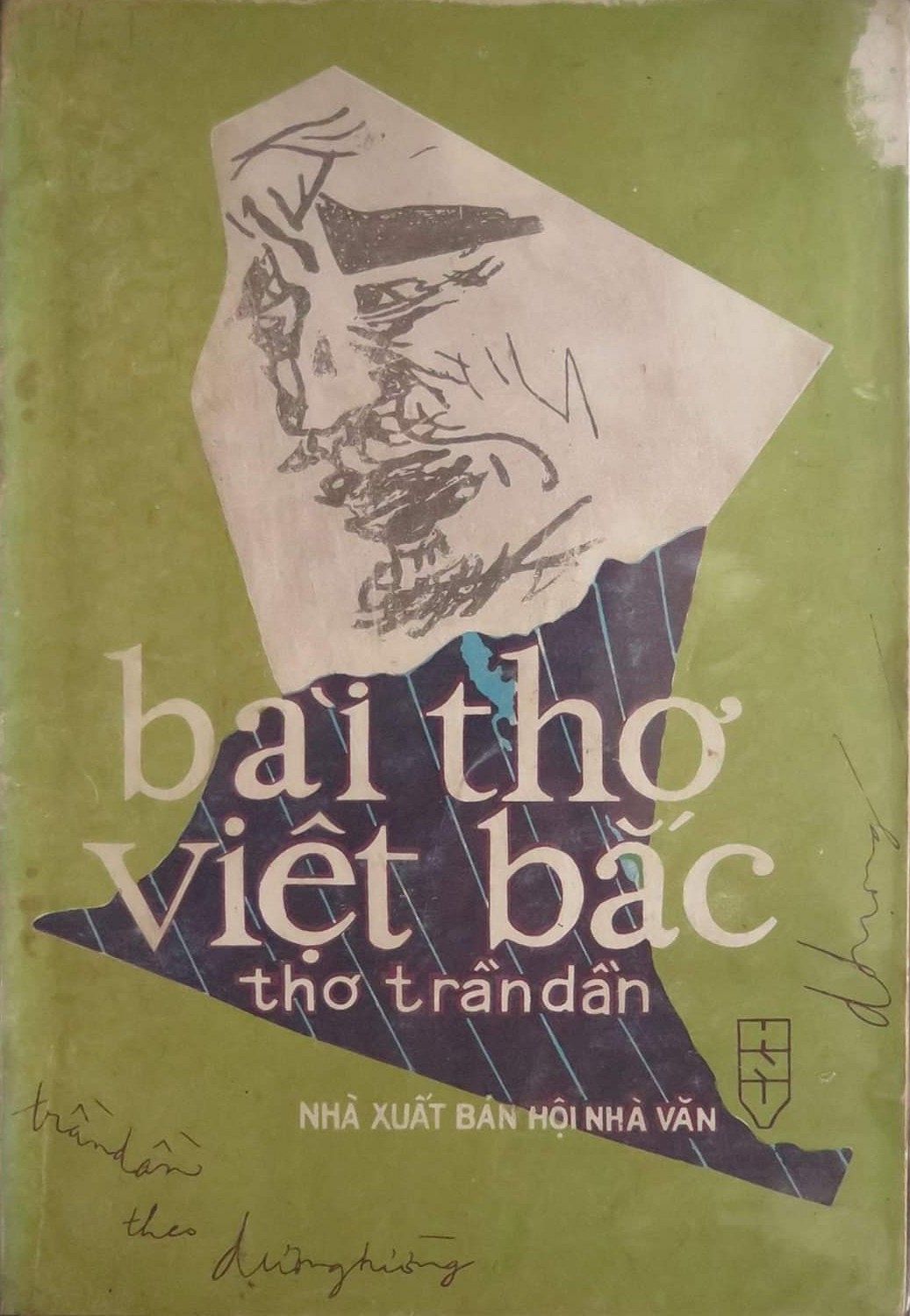
Earlier publication of “Đi! Đây Việt Bắc” under a different name, “Bài thơ Việt Bắc.”
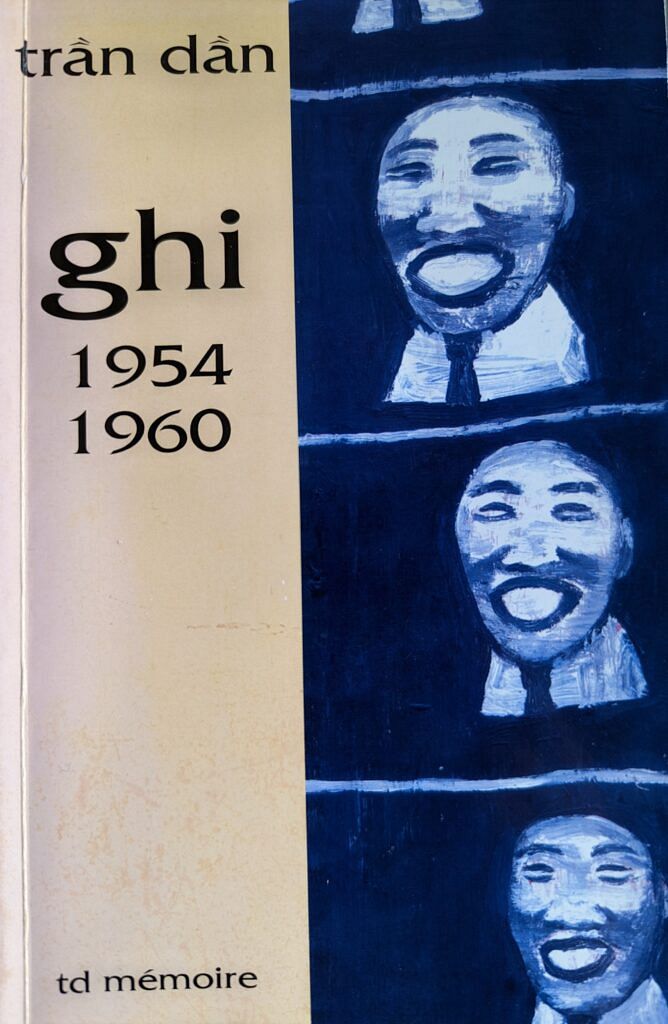
Trần Dần — Ghi 1954-1960.
His epic-poetry collection Đi! Đây Việt Bắc! (Go! Here’s Việt Bắc!), wrote during a brief peaceful era regarding his Điện Biện Phủ’s experiences, exemplified such a spirit — as seen in an excerpt of chapter III:
|
[rough translation] |
|
|
Ở đây manh áo vải chung nhau. Giấc ngủ cùng chung chiếu đất [...] Con muỗi độc chung nhau cơn sốt. Chiến trường chung dầu dãi đạn bom. Tới khi ngã lại chung nhau đất mẹ. |
Here cloth shirts’ panels together. Our sleep together on ground's mat. [....] The poisonous mosquito together our fever. Battlefields together weathering bullets & bombs. Until fallen together yet mother earth. |
The refrain “chung” employs togetherness to connote soldiers’ impoverished state — sharing mats, and even shirts; harsh life-risking conditions in battle, with its malaria-inflicting mosquitoes and deadly bombs. They are traumatic yet real experiences that the cultural zeitgeist would like to forget. However, togetherness also emphasizes the soldiers’ steadfast devotion to the cause amid the hardships. This goes to show Trần Dần’s ability to convey the soldiers’ complex experiences using the most succinct and impactful language, but also how encouraging socio-cultural amnesia risked erasing empathy and understanding towards the beauty that came along with and emerged from life’s ugliness.

Wounded soldiers at Điện Biên Phủ being taken care of.
Trần Dần ends the chapter with aplomb, finding new poetically interesting ways of using concepts “nợ” (debt) to convey the soldiers’ humility and gratefulness to everything, even if they were inanimate beings like the land, its flora and fauna, and of course, their fellow citizens:
|
[rough translation] |
|
|
Ta mắc nợ những rừng xim bát ngát. Nợ bản mường heo hút chiều sương. Nợ củ khoai môn nợ chim muông nương rẫy. [...] Dù quen tay vỗ nợ cũng chớ bao giờ vỗ nợ nhân dân ! |
We’re indebted to rose-myrtle forests immense. Indebted To indigenous villages, remote in evenings’ mist. Indebted to yams indebted to birds and beasts and highland fields. [...] Even if, for granted, we denied these debts, we would never deny our debts to the people ! |
As such, Đi! Đây Việt Bắc! demonstrated Trần Dần’s socialist realist spirit, but also his rebellious creativity: not just in the idiosyncratic yet apt imageries, but also in the enjambed lines of the stair-case poetic form that he learnt from Russian poet Mayakovsky, whose “poetic form-and-function revolution” practice resonated much with Trần Dần, infusing an accelerating dynamism to the work.
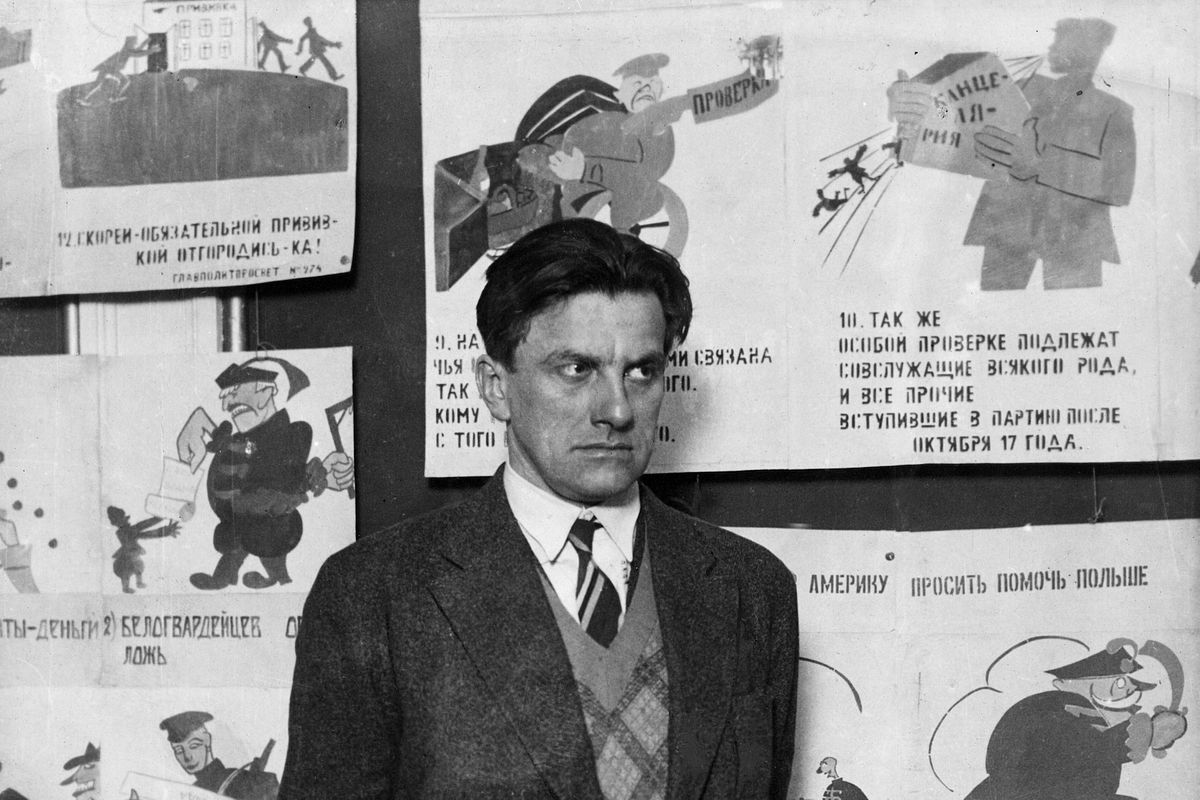
Russian Dadaist poet Vladimir Mayakovsky.
Unfortunately, despite the work’s merits in both craft and content, it didn’t come to light immediately: Trần Dần had been banned from publishing and served a brief jail sentence that was cut short by his suicide attempt. This was in part due to his involvement in Nhân Văn-Giai Phẩm, particularly his criticisms of ‘Việt Bắc,’ a poetry piece written on the same subject matter by Tố Hữu, his literary rival who oversaw the artistic activities at that time. He found Tố Hữu’s work, with its usage of traditional epic poetry’s register to focus on the region’s romantic beauty post-battle, had not dived deep enough into the soldiers’ perspectives, nor had it demonstrated new and strong employment of the Vietnamese language to convey so, thus lacking in power and zest necessary for a revolutionary poetic voice. It did not help that Trần Dần’s artistic approach meant he also decided to address the 1954 exodus of northerners in his poem ‘Nhất định thắng’ (Surefire Victory); this was the nail in the coffin to his literary career, alongside his decision to marry his wife Khuê, even as his peers disapproved because her relatives were among those who left to the south across the divided Vietnam.
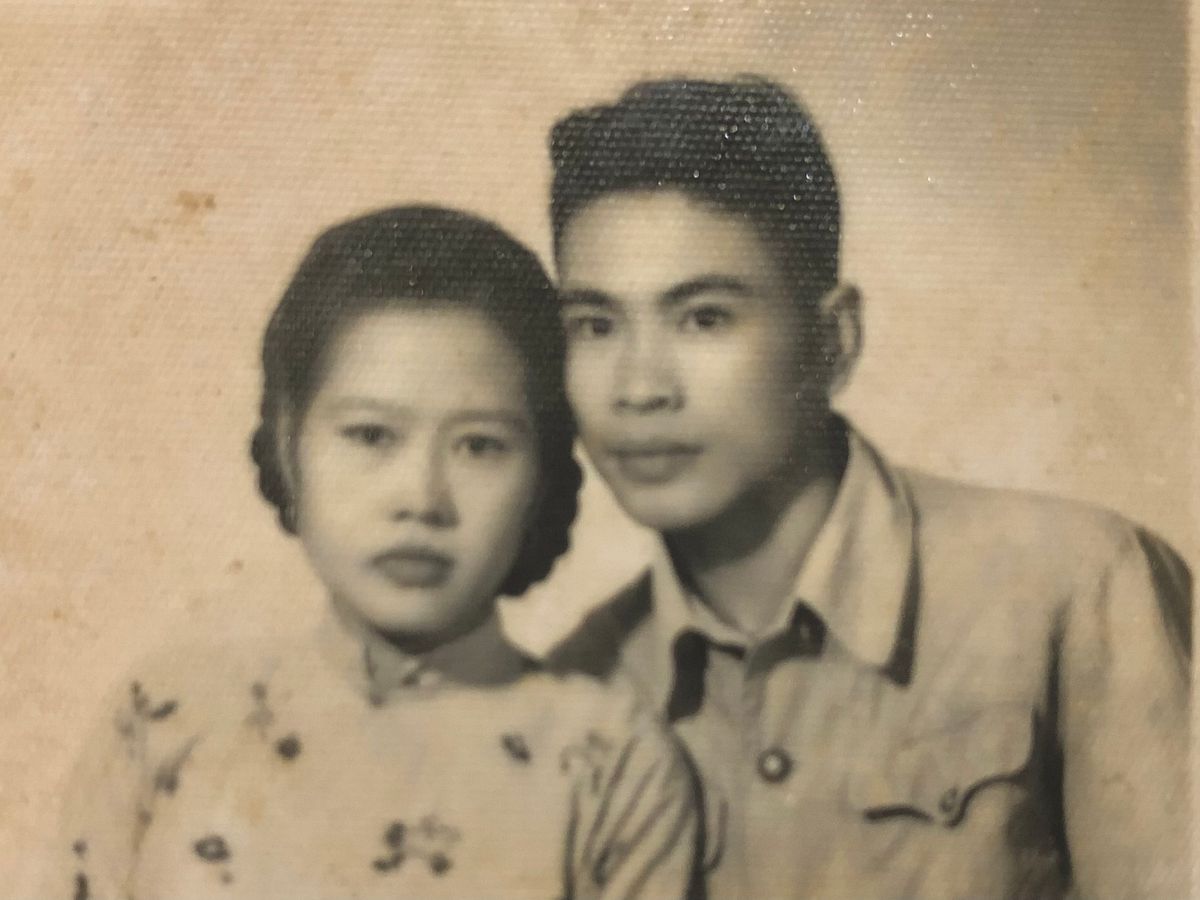
Trần Dần (right) and his wife Ngọc Khuê (left).
Up until 1988, many public readers passionately stood by his works; he was even invited for literary talks with them in Huế, admitting: “I became very emotional because of the many direct and honest questions that were posed to me.” His contributions were ultimately formally recognized with a posthumous National Award for Arts and Literature in 2007.
Overall, Trần Dần’s incredible even if tumultuous, journey served as a bittersweet reminder of the difficult yet important endeavors of integrity and sensitivity in life. This wasn’t just a matter of making art, but also adopting in art-making the philosophy of being attuned to contemporary life’s undiscussed social aspects, neither by sugarcoating them nor being “a rebel without a cause.” Only by doing this can we inspire ourselves and others around us to critically reflect on our lives with honesty and acknowledgement.
Challenge yourself and the past, always — because you are alive.
If not for the Điện Biên Phủ Battle against the French, subsequent issues of Dạ Đài would have been produced. The magazine was established by 19-year-old Trần Dần and fellow poets of the Tượng Trưng (Symbolist) group, influenced by Symbolist poetry but also its following artisic movements, such as surrealism and Dadaism — hence the name “Dạ Đài.” “We’ve become tired with shallow poetry, chewing and referencing to death earthly sceneries, and worldly sentimentalism,” their Symbolist Manifesto declared, “we want to dive deep into extraneous bodies, into inner selves, and want to go further than heaven and earth.”
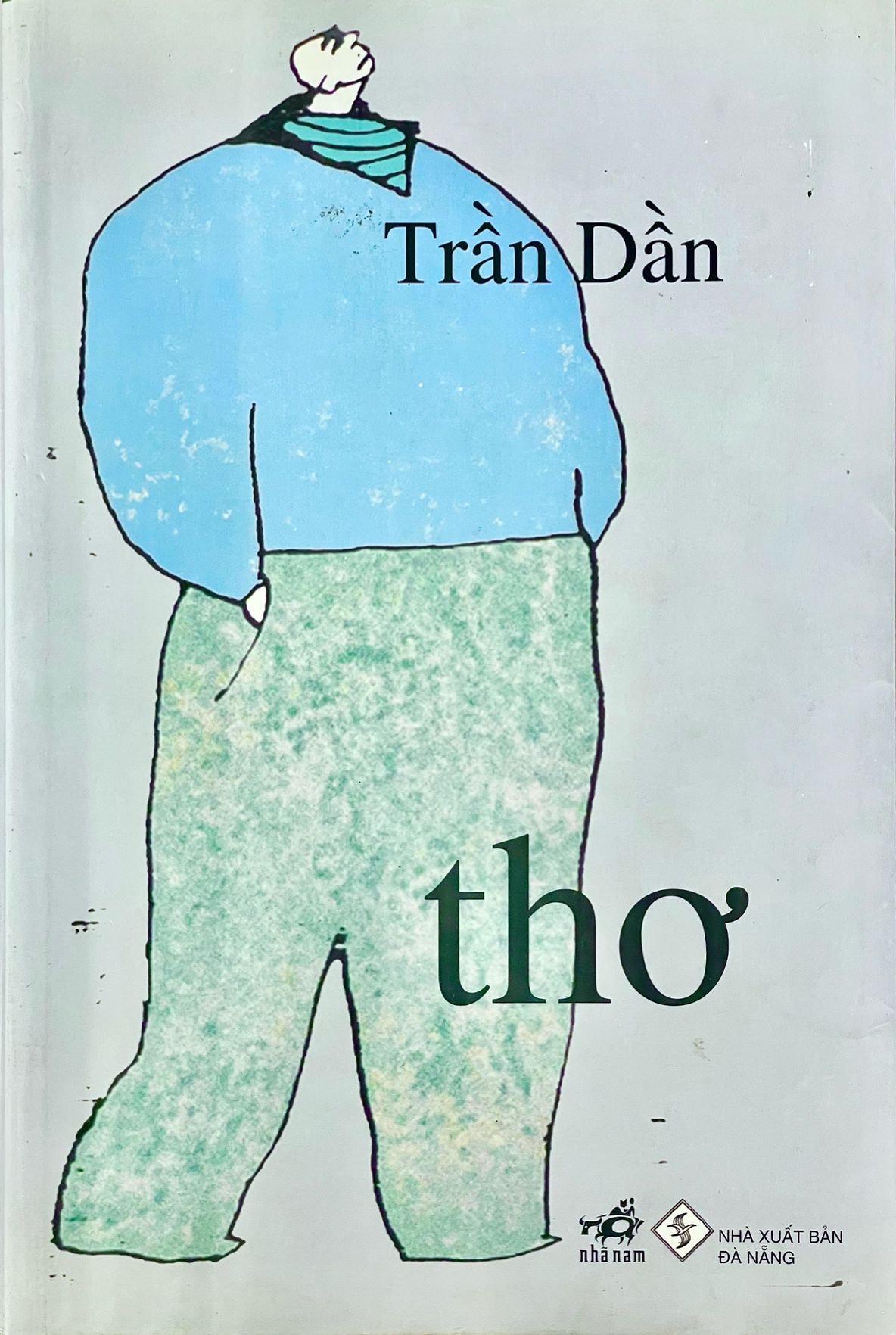
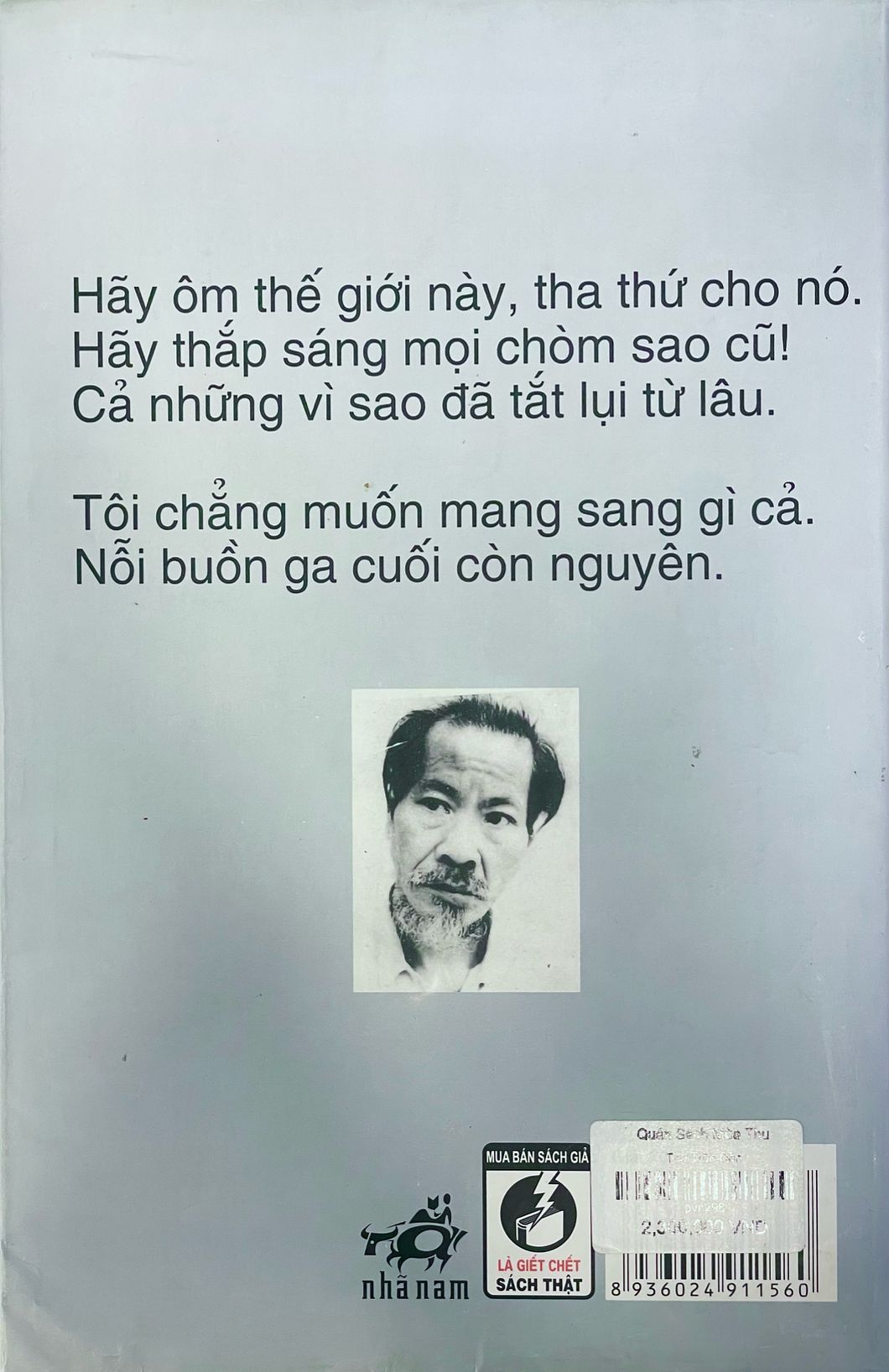
The front and back covers of Thơ.
Trần Dần had been a rebel ever since his formative years. Apart from Russian Dadaist Mayakovsky, in his interview with literary friends, Trần Dần named French Symbolist figures, such as Baudelaire and especially Rimbaud, as his early reads’ writers. This contrasted with the influences of his senior contemporaries, like Xuân Diệu or Thế Lữ, from Thơ Mới, taking cues from the Romanticism of Victor Hugo or Musset. They were thus deemed overly sentimental and melancholic by Trần Dần’s group, who sought to bring in a fresh poetry wave.
Even as Tượng Trưng was disbanded, its manifesto remained in Trần Dần’s core belief. He was determined to break away from previous generations’ established conventions on what was considered acceptable or unacceptable subject matter and aesthetics. Therefore, apart from embracing the country’s multi-faceted current affairs in poetry, and as part of his “all-encompassing revolution” ideal, Trần Dần also tackled subject matters such as sexual liberation and individualism with the same intensity and avant-garde techniques that had since become his signature style, at a time when socialist realism was solely privileged. “I also love Non-Current-Affairs Poetry,” he explained. “Poetry that encompasses the country and time, Poetry that spills over all centuries, and Poetry that even enters the immense dialectic of things.”
For instance, in ‘Đố ai chọc mắt các vì sao’ (Who here pierces the eyes of stars?), he combines quotidian images of the townscape and its flora (such as phố, mưa, lá, cành, nhà, and ngõ) with suggestive word choices (such as khoả thân, khe, toẻ, and xoạc) to create a surrealistic poetic tension:
|
[rough translation] |
|
|
Phố khoả thân mưa In hình võng mạc nước Lập lờ khe lá dọc Toẻ cành xanh nét móc Thẹm nhà đôi ngõ xoạc Khoả thân mưa… |
Townstreet naked rained Imprinting shape in water retinae Leaf’s equivocal vertical slit Verdant hook-stroke branches split House front-porzh, with duo paths spread Naked rain… |
By juxtaposing the two registers, he invites readers to reframe their perceptions of sexuality from something generally considered taboo into something deserving of normalization, for the presence of such terminologies prevailed among most mundane and natural phenomena. Using this technique, Trần Dần further espoused a world washed clean by the rain, returning to a primordial and arguably pure, “naked” state of being, with rules yet to be placed on it.
In fact, Trần Dần’s exploration is comparable to French philosopher Michel Foucault’s 1976 study The History of Sexuality. In it, Foucault argues that repressive moral values and pathologizing scientific frameworks both exist to control sexuality’s discourse in society. Similarly, many of Trần Dần’s writings frequently disrupt boundaries demarcating certain language uses as inappropriate, thus liberating our modes of expression from their preconceived definitions and social connotations. Furthermore, while Trần Dần is not the first Vietnamese writer to explore sexuality, the fact that such a topic was tackled in folk literature or Hồ Xuân Hương’s poems spoke to the timeless and ever-contemporary nature Trần Dần’s experimentations, especially considering how talks on sexuality have become even more open in contemporary artistic and daily realms.
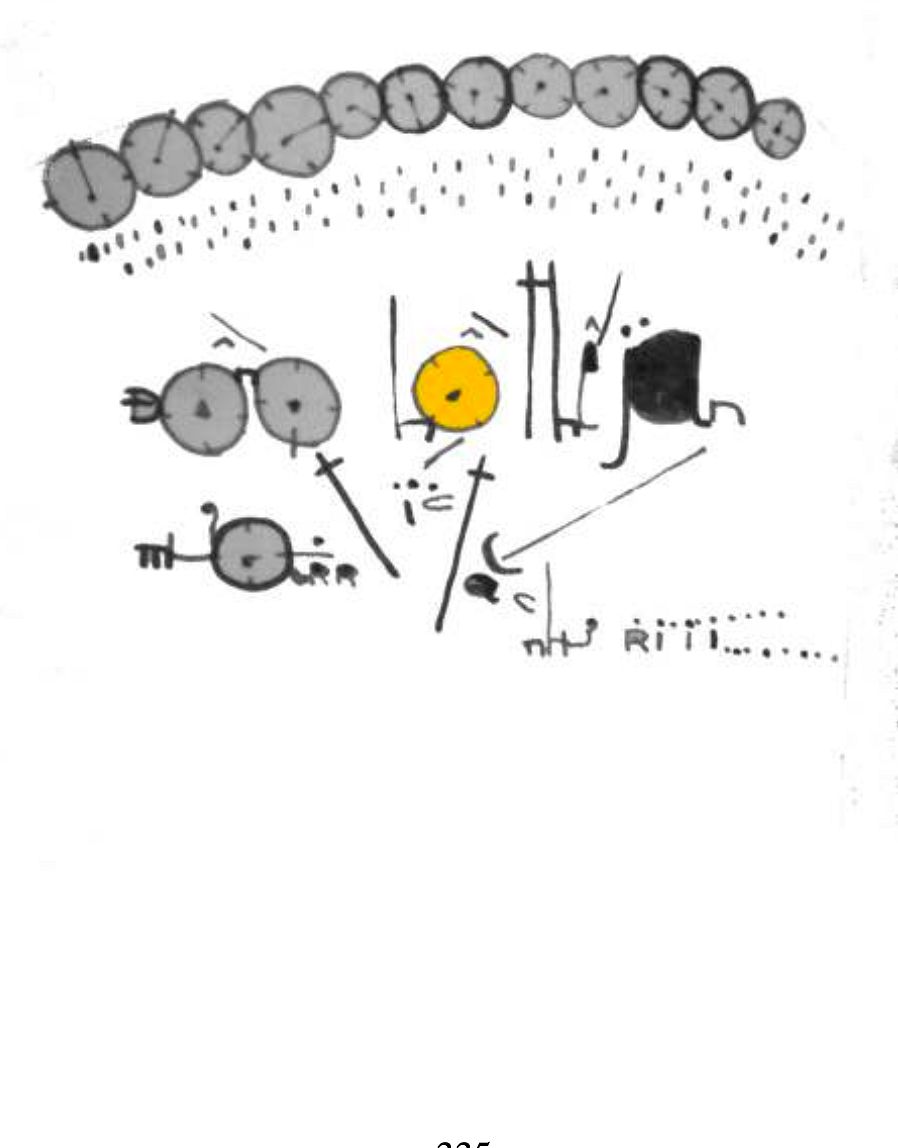
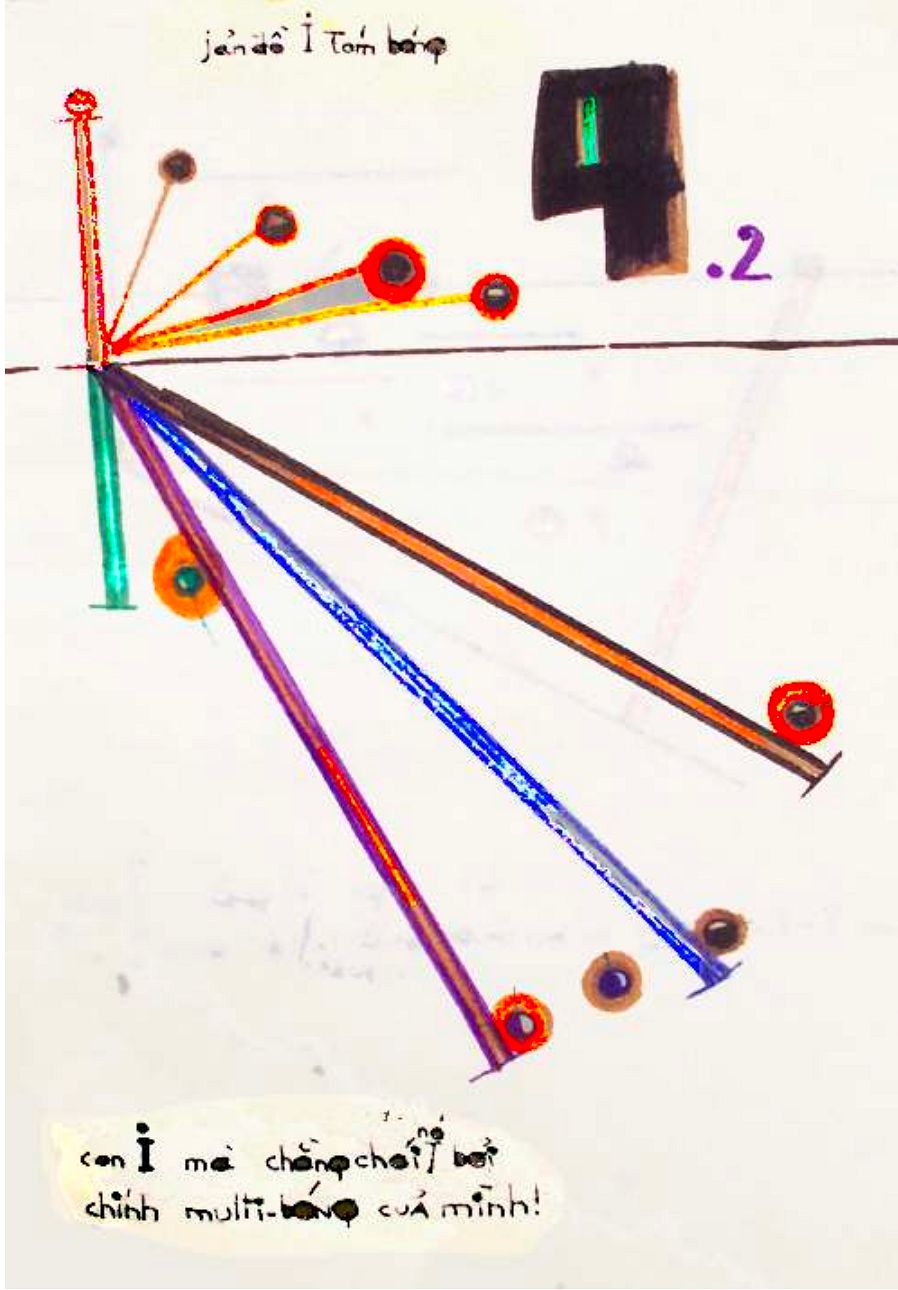

Various drawings by Trần Dần.
Trần Dần also pushes himself further by exploring the individual’s place within society, playing with spelling rules and other “extended techniques” to visually position words on a page. This can be seen in this extract from ‘Con I’ (Unit I), whereby the letter “i” itself is the subject matter — a letter Trần Dần seemingly considers as the simplest sound particle, and basic visual symbol and building block:
|
[rough translation] |
|
|
NGƯỜI Đi. NGÀY Đi. LỆ KÌA ici Cie i i i i i mọi đồng hồ vẫn khóc như ri ĐỒNG HỒ QUẢ ĐẤT mọi đồng hồ thế jới (nếu đồng hồ) đều tham ja mưa rả ríc .. i CHẠY NHƯ Ri i i [...] THẾ JỚI VẪN KHÓC NHƯ Ri ici i i i i i i i i i i ici KHÔNG i KHÔNG THÍC NGi . |
HUMANS FLi. DAYS FLi. TEARS THERE ici Cie i i i i i everi clock still cries like ri THE EARTH CLOCK everi vvorld clock (if clocks) all zhoin rain driz zlin .. i RUNS LIKE Ri i i [...] THE VVORLD STILL CRIES LIKE Ri ici i i i i i i i i i i ici NO i NO ADAP ABiLYTi . |
According to researcher Nguyễn Thuỳ Dương, “i”’s shape is evocative of a human icon, thus representing an individual person; while I also find it interestingly resonant as the English first-person pronoun “I.” Just like how phonetically similar letters are replaced to produce idiosyncratic spellings (such as j replacing gi in “jới”), “i” morphed in and out of its upper and lower cases, trying out personas and placements in words, as if to find its belonging. “i” becomes part of words like “Đi” or “NGi”, often with deviating case and spelling rules, before joining the ever-present row of “i i i i i” that conjures sonically drone-like raindrops, or visually a line of humans, etc. — and the cycle continues.
Is Trần Dần trying to convey how the Self constantly fluctuated (and won’t settle: “KHÔNG i KHÔNG THÍC NGi”) between a larger homogenous society symbolized by the line-up of “i” figures, and imperfect even if individualistic cliques symbolized by the differently spelled words? In which case, Trần Dần argues against viewing the concept “us” as an equivocal singularity, and instead calls for the recognition of the individual “I”s that fosters a collective whole. Uncannily, this very conclusion is uttered a decade later in Lưu Quang Vũ’s play ‘Tôi và Chúng ta’ (I and We), in light of Vietnam’s tense zeitgeist towards adopting a socialist-oriented market economy that eventually led to Đổi Mới.
“Trần Dần’s decision to stretch his artistic practice in both form and function, using ways that challenge its pre-established aesthetic conventions, breaks new ground for fellow Vietnamese on what our human experiences could look and feel like, and what subject matters art could and should address.”
It is easy to dismiss any avant-garde experimentations as alienating and pointless art for others. Nevertheless, “all values of Truth, Kindness, and Beauty are difficult to understand — even artistic ice-skating is difficult to understand (!)” Trần Dần expressed. He added: “What’s known is a meaning, what’s not yet known is a word. What’s not known is deep and profound. Your recitation of a beautiful saying like Confucius’s is yet poetry, of a paradox like Lao-tsu’s is also yet poetry. To jump over your shadow is poetry. One’s yet to understand poetry, because they face difficulty jumping over their own shadow.” As such, Trần Dần’s decision to stretch his artistic practice in both form and function, using ways that challenge its pre-established aesthetic conventions, breaks new grounds for fellow Vietnamese on what our human experiences could look and feel like, and what subject matters art could and should address.
In the same interview, Trần Dần commented on ca dao, an antecedent folk literary form: “That’s our national heritage, a teacher must place it at the same level as Nguyễn Du’s, or Cao Bá Quát’s. Must learn it to bury it.” Breaking rules and challenging predecessors were what Trần Dần called for, and he anticipated that the younger Vietnamese at that time would eventually rise to the challenge as well: “The younger generation? I’m still waiting and waiting. They were still being contained in the trap of regal literature. I’m anxiously waiting for the young cohort to gather enough strength, grow up, and bury us, just like how we have buried the pre-war generation.”

Trần Dần (second from left) and Trần Trọng Vũ (second from right) and friends.
It can be safe to say that Trần Dần would be pleasantly surprised to learn about the many independent writing communities in Vietnam nowdays. Even without systematic government support, they host spaces for young Vietnamese willing to experiment with the national language and critically engage with our contemporary experiences. Perhaps this is Trần Dần’s greatest hope for his readers: to live and love life like an artist, in ways that are even more passionate than whatever he had done.

















